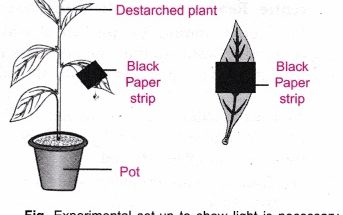How are nutrients replenished in the soil?
Answer-
Nutrients in the soil are replenished through various mechanisms that contribute to soil fertility and sustainable plant growth. The following processes play essential roles in nutrient replenishment-
Decomposers- Decomposers, including bacteria, fungi and other microorganisms, play a crucial role in breaking down organic matter in the soil. They secrete enzymes that break down complex organic compounds into simpler forms. This decomposition process converts organic material into inorganic nutrients such as nitrogen, phosphorus and potassium. These nutrients are then released back into the soil so that they can be taken up and utilised by plants. Decomposers play a crucial role in nutrient recycling and ensure a continuous supply of nutrients to the soil.
Nitrogen Fixation- Atmospheric nitrogen (N2) is not directly usable by most plants. However, certain bacteria, known as nitrogen-fixing bacteria, can convert atmospheric nitrogen into a usable form such as ammonia or nitrates through a process known as nitrogen fixation. This conversion allows plants to absorb nitrogen and incorporate it into their tissues for growth and development. Nitrogen fixation is an important mechanism for replenishing nitrogen in the soil and ensuring its availability for plant growth and the synthesis of essential molecules.
Human Activities – Human activities can both contribute to and deplete soil nutrients. The overuse of synthetic fertilisers, over cultivation and deforestation can disrupt the natural nutrient cycle and lead to nutrient imbalance. Synthetic fertilisers provide an immediate nutrient boost, but can interfere with nutrient recycling processes. Excessive cultivation without proper crop rotation or soil management practises can lead to nutrient depletion, especially in monoculture systems.
Also Check – Soil Erosion: Types, Causes, Effects, and Prevention Explained
Various conservation methods can be used to maintain soil fertility and replenish nutrients-
- Organic farming practises emphasise the use of natural sources of nutrients such as compost, manure and cover crops. These practices promote soil health and nutrient recycling.
- Crop rotation involves alternating different types of crops in a given field over time. This practice helps prevent the depletion of certain nutrients by varying the nutrient requirements of different crops, resulting in improved soil fertility.
- Conservation tillage techniques aim to minimise soil disturbance during planting, reduce erosion and conserve soil organic matter. This method helps to maintain the nutrient content and overall health of the soil.
- Terrace and contour cultivation methods are used on slopes to prevent soil erosion. By controlling water runoff, these practices help keep nutrients in the soil and prevent their loss.
Also Check – Runoff in the Water Cycle- Explore the Effects of Hydrologic Cycle Runoff
